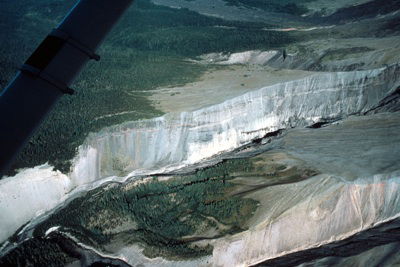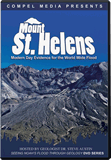Volcanos, Rock Layers, and the Flood

Photo courtesy USGS
Toutle River Canyon
“On that day all the fountains of the great deep were broken up, and the windows of heaven were opened.” (Genesis 7:11 )
On May 18, 1980 Mount St. Helens, a volcano in Washington state, violently erupted. This eruption challenged evolutionary, long-age ideas about how rock layers and canyons form. Evolutionists believe that it takes millions of years to form rock layers one at a time. Mount St. Helens created a 25-foot-thick sequence of rock layers, with thousands of separate, thin layers, in just a few hours! It doesn’t take millions of years to form rock layers. It just takes a catastrophe like Mount St. Helens. Evolutionary geologists also believe that it takes a river millions of years to carve a canyon (such as Grand Canyon). A mudflow caused by a later Mount St. Helens eruption cut the “Little Grand Canyon,” a large canyon 100 feet deep in just one day! That canyon now has a river in it. Canyons do not take millions of years to form. It just takes a catastrophe like Mount St. Helens. This eruption accomplished in seconds, hours, or days what most people believed took hundreds of thousands or millions of years.
The Bible talks about a catastrophe much bigger than Mount St. Helens. Mount St. Helens was just a small, local event, but the evidence of bigger canyons and rock layers around the world points toward a much bigger, global event. This event was the global catastrophe of the Flood of Noah’s day. The eruption of Mount St. Helens helps us to understand how the Flood rapidly laid down rock layers and rapidly cut canyons. The history of the Bible is true!
Recommended Resources
- © 2024 Answers in Genesis
- Privacy Policy
- Contact
- About


